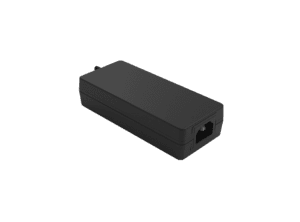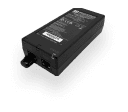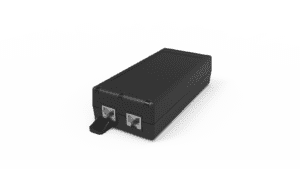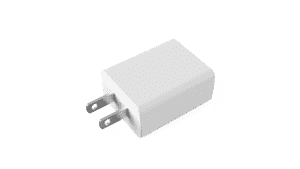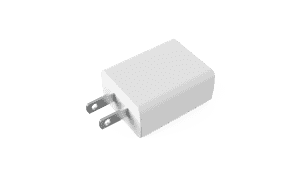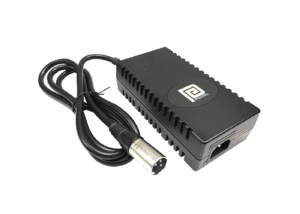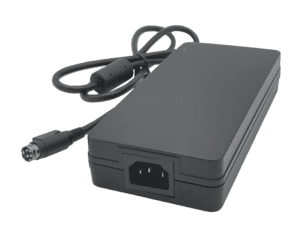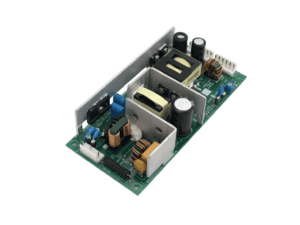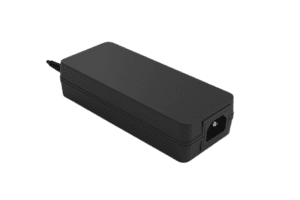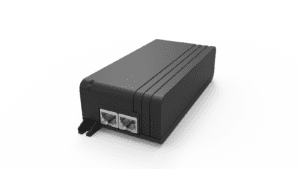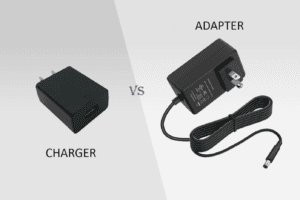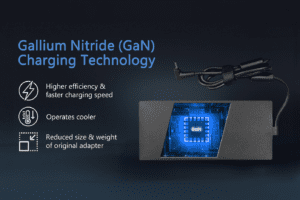BLOG
Power Supply Manufacturing: How to Manufacture Multi‑Port USB‑C Adapters for AI Laptops and Workstations
Table of contents
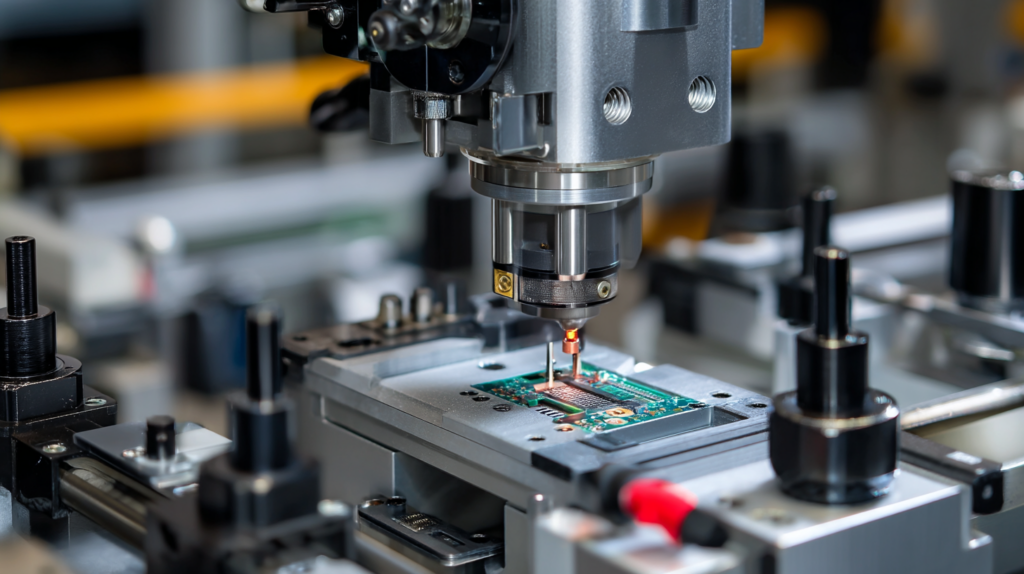
Why AI Laptops and Workstations Need Specialized USB-C Power Adapters
AI laptops and mobile workstations are not your average ultrabooks. They’re built for compute-heavy applications like machine learning, data science, simulation, and 3D rendering—often powered by discrete GPUs, high-core-count CPUs, and large memory configurations. These systems demand more power, better thermal control, and stable current delivery than traditional laptops.
Unlike older laptops that used barrel-style connectors or underpowered 60W adapters, AI laptops now rely on USB-C PD (Power Delivery) protocols, often requiring 100W or even 140W per port. With many professionals using dual monitors, tablets, and external drives simultaneously, multi-port USB-C power adapters must balance output across ports without voltage sag or overheating.
Top Features
- 100W–140W PD 3.1 Support per port for high-performance laptops
- Multi-port architecture supporting laptops, displays, and peripherals
- Thermal sensors and GaN switching for compact, efficient design
Top Benefits
- Enables full performance under load without throttling
- Supports multiple device charging from a single compact adapter
- Enhances user mobility by replacing multiple bricks with one smart unit
Best Practices
- Design for worst-case simultaneous load across all ports
- Ensure PD negotiation is stable across multiple host types
- Use smart ICs to regulate load prioritization and thermal cutoffs
Powering AI laptops is no longer just about wattage—it’s about intelligent delivery, multi-device support, and thermal safety.
How to Design Multi-Port USB-C Adapters with Stable Power Delivery
Multi-port USB-C power adapters must deliver consistent voltage and current across multiple PD profiles, even when more than one device is drawing high power. OEMs must engineer these adapters to negotiate PD contracts intelligently, dynamically allocate power between ports, and avoid overload or voltage drop when new devices are plugged in.
A key factor is implementing advanced power management ICs (PMICs) that can track port usage, handle handshakes between devices, and reroute current in real-time. Thermal monitoring, programmable logic, and high-frequency switching (GaN or similar) are critical for balancing performance with size and heat.
Top Features
- USB Power Delivery 3.0 or 3.1 Compliance with PPS (Programmable Power Supply)
- Intelligent Load Balancing to distribute power based on real-time demand
- Overload, short-circuit, and thermal protection per output channel
Top Benefits
- Prevents system shutdowns or connector damage under heavy loads
- Optimizes power flow between devices like laptops, phones, tablets, and displays
- Enables global compatibility with USB-C standards and fast-charge protocols
Best Practices
- Use e-marker cables and verify PD handshake reliability at all voltage levels
- Design for redundancy to avoid power brownouts during reallocation
- Ensure firmware can be updated to support future PD profiles or load behavior
Power delivery is as much about communication and control as it is about voltage—engineered correctly, it can future-proof the entire charging ecosystem.
What Role Does GaN Play in Next-Gen USB-C Adapter Design?
Gallium Nitride (GaN) has revolutionized power supply design by enabling higher switching frequencies, lower losses, and significantly smaller form factors. For multi-port USB-C adapters targeting AI laptops, GaN is essential for achieving compactness and thermal efficiency without sacrificing wattage.
GaN-based designs allow adapters to shrink in size while still delivering 100W+ per port. They also run cooler, which is crucial for densely packed adapters with multiple ports and prolonged high-load sessions. OEMs using GaN can integrate smaller magnetics, reduce PCB area, and maintain safety margins even under worst-case thermal conditions.
Top Features
- High-frequency switching (up to 2 MHz) for smaller transformer size
- Low RDS(on) and thermal resistance compared to silicon MOSFETs
- Higher efficiency at full load, reducing heat buildup
Top Benefits
- Allows for sleek, pocket-sized 100W+ power adapters
- Reduces the need for fans or bulky heat sinks
- Improves long-term reliability by minimizing thermal cycling
Best Practices
- Design PCB layouts for minimal parasitic inductance at high switching speeds
- Pair GaN FETs with high-efficiency controllers and robust EMI filters
- Validate thermal envelope with full-port load simulation across environments
GaN isn’t just a trend—it’s a strategic advantage for building faster, lighter, and more capable USB-C adapters.
CLIENT'S QUOTE
"Phihong’s PoE solutions have made a huge difference for us! Our network runs more efficiently, and we’ve seen real cost savings. We couldn’t be happier!"
How to Address Thermal Management in High-Wattage USB-C Power Adapters
As power density increases, so does the risk of heat buildup—especially in compact multi-port USB-C adapters delivering 100W or more per port. Thermal management is no longer an afterthought; it must be engineered into the design from the ground up.
OEMs must evaluate not just the internal heat generation from switching components, but also the heat stacking effect when all ports are in use. In slim enclosures with minimal airflow, overheating can quickly degrade performance or cause shutdowns. Without smart design, thermal stress can reduce efficiency, shorten component lifespan, and compromise user safety.
Top Features
- Real-time thermal sensors linked to dynamic power throttling
- Thermal interface materials (TIMs) for heat transfer to the enclosure
- Efficient internal layout with thermally isolated hot zones
Top Benefits
- Prevents overheating and auto-shutdown during high loads
- Extends product lifespan and improves long-term reliability
- Ensures consistent charging performance across all connected devices
Best Practices
- Simulate thermal behavior using CFD (computational fluid dynamics) tools
- Incorporate heat spreaders or thermal vias for PCB-level cooling
- Design for passive convection through vented or metal-clad enclosures
Thermal control isn’t just about safety—it’s a key factor in achieving full PD performance across multiple ports without throttling or failure.
What Customization Options Are Most Valuable to OEMs and IT Buyers?
OEMs building adapters for AI laptops and mobile workstations increasingly require customized power solutions—not just off-the-shelf chargers. Corporate IT buyers, high-end workstation users, and hardware brands often need adapters that match their device portfolio, user workflow, and brand identity.
Customizations may include:
- Port layout and orientation to fit docking workflows
- Custom voltage or current profiles to align with specific models
- Branding and enclosure design to match aesthetics or thermal conditions
- Smart firmware to prioritize specific ports or regulate based on device ID
Top Features
- Custom housing and connector placement for embedded or bundled applications
- Port priority settings or firmware-controlled power allocation
- Logo branding and color-matching for OEM bundling
Top Benefits
- Differentiates product offerings in competitive enterprise markets
- Simplifies IT deployment with consistent power across device families
- Reduces RMA or failure rates by optimizing adapter-device compatibility
Best Practices
- Work with a power supply partner who can offer low-MOQ customization
- Provide full spec sheets for all devices the adapter will serve
- Validate compatibility across OS, device types, and usage scenarios
Customization gives OEMs control—not just over power, but over brand experience and device integration.
How Phihong USA Helps OEMs Manufacture Multi-Port USB-C Adapters for AI Devices
Phihong USA is a trusted power supply manufacturer with deep expertise in USB-C PD adapters, GaN technology, and high-performance mobile computing power solutions. As AI laptops and advanced mobile workstations demand smarter, denser power, Phihong delivers precision-engineered adapters built for next-gen devices.
We help OEMs by offering:
- 100W–140W USB-C adapters with PD 3.0/3.1 and PPS support
- Multi-port smart chargers with dynamic load balancing
- Thermal-optimized designs using GaN and advanced cooling strategies
- Custom firmware and physical configurations tailored for OEMs and enterprise deployment
- Pre-compliance EMI testing and global certification (UL, CE, FCC, DOE Level VI)
Whether you’re supplying power for AI developers, creative professionals, or high-end enterprise devices, Phihong ensures your adapters are reliable, efficient, compact, and compliant—ready for global rollout.
Let’s power the next generation of AI laptops and mobile workstations—intelligently and efficiently.
Start your project at www.phihong.com or contact usasales@phihongusa.com to schedule a consultation.

Contact Our Team Today!
Our dedicated sales team and international partners are prepared to support you with your latest projects and initiatives globally.
Explore More with Phihong USA
As we conclude our exploration of PoE technology, it’s evident how these innovations are streamlining power and data integration across various industries. Phihong USA stands at the forefront of this technological advancement, offering a diverse range of power solutions designed to meet the evolving needs of modern industries.
Phihong USA’s extensive product lineup includes:
- Power over Ethernet (PoE) Solutions: Delivering reliable power and data transmission over a single cable, ideal for simplifying network installations and reducing costs.
- AC/DC Adapters and Power Supplies: From compact adapters to industrial-grade power supplies, Phihong provides solutions that ensure efficiency and reliability in various applications.
- Battery Chargers: Customizable chargers for lithium-ion and lead-acid batteries, supporting a wide range of power requirements for mobility and industrial applications.
- Medical Power Supplies: Specialized power solutions designed to meet the stringent requirements of the healthcare industry, ensuring safety and reliability.
Phihong USA is committed to innovation and excellence, continually developing products that meet the highest standards of performance and reliability. Their global reach and dedication to customer support make them a trusted partner in powering the future.
Here are some useful links to explore Phihong USA’s offerings further and bring in new potential clients:
Visit Phihong USA to discover how their advanced power solutions can support your business needs. Whether you’re looking to upgrade your network, or find reliable power supplies, Phihong USA has you covered.
By choosing Phihong USA, you’re partnering with a leader in power technology, ensuring your operations run smoothly and efficiently with top-tier power solutions. Contact Us today!
FAQ
What makes multi-port USB-C adapters different from single-port chargers?
Multi-port USB-C adapters are designed to power multiple devices simultaneously while maintaining consistent performance and safety. Unlike single-port chargers, which negotiate and deliver power to one device at a time, multi-port units must dynamically balance power delivery across each connected load—often in real time.
These adapters typically support:
- Multiple PD profiles (5V, 9V, 15V, 20V, and beyond)
- Smart power allocation, where priority ports (such as for laptops) receive full wattage while other ports throttle
- Cross-device compatibility, including laptops, phones, tablets, and accessories
They also require more complex thermal design, EMI shielding, and firmware logic to avoid conflicts or overcurrent situations. In professional settings like AI development or content creation, users often rely on a single adapter to power a laptop, monitor, and mobile device all at once—so power stability and thermal efficiency become mission-critical.
Why do AI laptops require more power than traditional laptops?
AI laptops are equipped with high-performance CPUs, GPUs, and accelerators that require significantly more power to function at full capacity. These devices often run demanding workloads such as model training, large-scale inference, 3D simulation, and data analysis—placing continuous strain on the system.
Whereas traditional laptops may draw 45–65W during peak usage, AI laptops commonly demand 100W to 140W, especially under GPU load. USB-C PD 3.0 and 3.1 standards now support higher wattages to accommodate this demand, but the adapter must be engineered to:
- Maintain voltage stability
- Prevent overheating
- Support long-duration peak loads
For OEMs and users, this means selecting or designing adapters that not only provide enough power but also meet the device’s thermal, timing, and load balancing needs under sustained AI-driven workloads.
What is USB PD 3.1 and how does it benefit high-performance laptops?
USB Power Delivery (PD) 3.1 is the latest version of the USB-C charging standard, supporting up to 240W of power—a significant increase from the 100W limit in PD 3.0. For high-performance laptops and workstations, PD 3.1 enables faster charging, higher sustained wattage, and wider voltage support (up to 48V).
Benefits include:
- Charging large-capacity batteries more quickly
- Enabling full performance even while charging
- Consolidating multiple charging solutions into a single adapter
PD 3.1 also introduces adjustable voltage supply (AVS), which allows devices and chargers to fine-tune voltage and current in real time. This results in more efficient power delivery, reduced heat, and improved battery health.
OEMs building multi-port adapters for AI laptops should ensure PD 3.1 support to meet the growing demands of devices like gaming notebooks, mobile workstations, and creative AI laptops.
How does GaN improve multi-port USB-C adapter performance?
GaN (Gallium Nitride) technology allows for higher switching frequencies and lower heat generation compared to traditional silicon components. In multi-port USB-C adapters, this translates into:
- Smaller form factors
- Higher power efficiency
- Cooler operating temperatures under load
Because GaN transistors can switch faster and with lower resistance, power adapters can shrink their transformer size and reduce passive component bulk. This is particularly important in multi-port designs where internal space is limited and thermal buildup is a concern.
For AI laptop users, GaN-enabled adapters deliver full-speed charging in a smaller, more travel-friendly unit, without compromising safety or performance. OEMs who adopt GaN gain a competitive edge in both design flexibility and long-term efficiency.
How does Phihong USA support OEMs in the USB-C adapter market?
Phihong USA helps OEMs develop next-generation USB-C power adapters built for high-performance laptops, AI workstations, and multi-device environments. Our team specializes in multi-port, PD 3.1-compliant adapters using GaN and smart power management architectures.
We provide:
- Custom mechanical and electrical designs
- Firmware for intelligent power negotiation and port prioritization
- Thermal simulation and safety validation for global standards
- Branding and packaging support for OEM bundling or channel resale
- End-to-end testing, including EMI, thermal, and drop/shock compliance
Whether you need a single 140W adapter or a 4-port 240W PD solution, Phihong has the expertise, manufacturing scale, and regulatory knowledge to bring your USB-C power supply product to life.
Learn more or start your next project at www.phihong.com or email us at sales@phihongusa.com.

